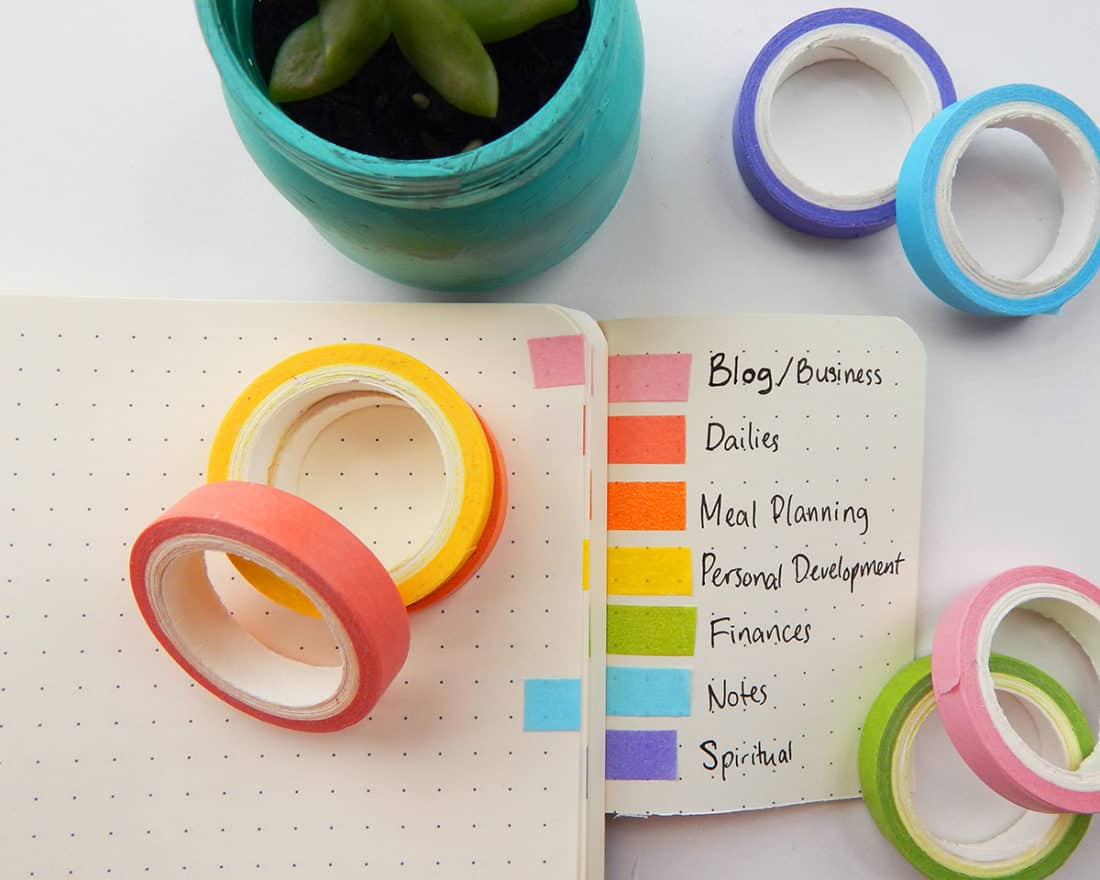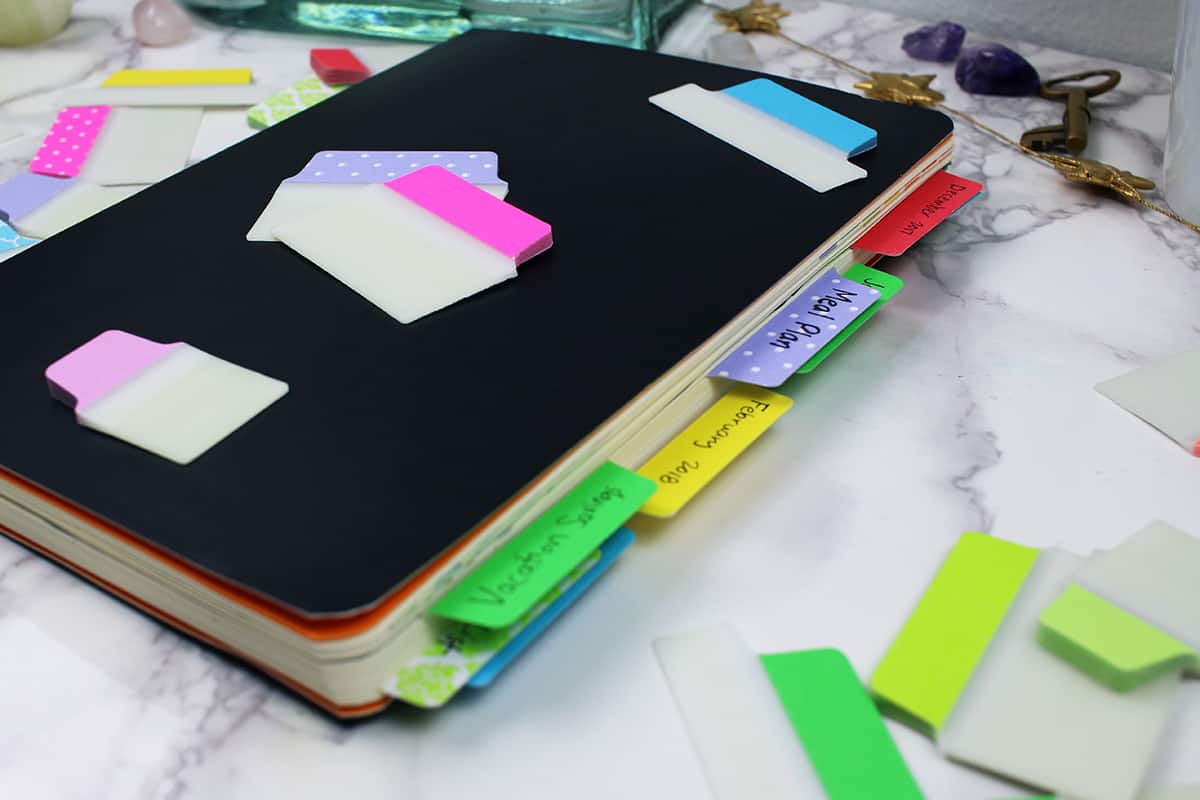How To Make A Bullet Journal Index (+ 6 Easy Hacks)
Articles may contain affiliate links.
The index is the heart of your bullet journal, but there is always room to improve. Here is how to make a Bullet Journal index & 6 ways to improve yours!
What Is A Bullet Journal Index?
A bullet journal index is one of the main pages you keep in your bullet journal, similar to a table of contents. An index is a place for you to record your spreads and the corresponding page numbers that you add to your bullet journal notebook so you can easily find them later. It works especially well with any journal that comes with numbered pages, or you can number the pages yourself. Your index is an extremely handy productivity tool that bullet journalists should definitely try!
The index is one of the fundamental bullet journal pages, along with the key, daily spread, weekly, monthly spread, and collections.
If you are a beginner to bullet journaling, I highly recommend you check out my comprehensive guide on how to bullet journal to learn about all of the important pages and how to use your bullet journal system to its fullest potential.
Why Do I Need A Bullet Journal Index?
Most notebooks that people use for bullet journaling contain over 200 pages. When you first start your bullet journal, it may seem easy to keep track of how many pages there are. But all of the new pages can quickly become overwhelming. Keeping an index in the first pages provides you with a space where you can quickly reference where spreads are located in your journal.
Additionally, you will be incredibly thankful you took the time to create an index when it comes time to migrate to a new bullet journal. Your index will help you quickly identify what specific pages you want to migrate from your old journal without having to spend a ton of time flipping through every single page!

How To Create A Bullet Journal Index
Creating a bullet journal index is straightforward enough. Let me walk you through the basic process before I show you some alternative ways you can set up your index.
Instructions
- DRAW YOUR COLUMNS:
At its most basic level, an index needs two columns: one for the name of the page and one for the page number. However, I’ll show you some more complex ways to organize your index that require a slightly different layout in a minute. - ADD SOME COLUMN HEADER:
Now it is time to label your columns. I like to take this opportunity to spice up my index a bit with some hand lettering. But feel free to keep it simple by adding in some stickers or simply writing out “Page Name” and “Page Number.” - INDEX YOUR EXISTING PAGE:
The final step is to add in the pages you’ve already created! I highly recommend that you create your bullet journal index in the first few pages of your notebook. I also suggest that you add new pages to your index the moment you create them. If you wait to add new pages, they can quickly pile up and never get added. - THAT’S YOUR BASIC INDEX:
That’s it! You now have a functioning index.
Notes
Make It A Habit: If you are struggling to keep your index updated, try adding it as a task in your habit tracker.
6 Simple Index Hacks
Just because you have functioning bullet journal index pages doesn’t mean you need to be finished. Here are six bullet journal index ideas to improve it!
Break It Down Into Categories
Breaking your index down into multiple categories makes it much easier to quickly find what you are looking for. I break my index down into four categories: monthly logs, daily logs, collection pages and trackers, and misc notes. But you can easily break it down into as many categories as you like, either by page or topic.
Color Code Your Index
Rather than adding in columns and categories that make your index take up a ton of space, you can simply color-code your index.

Color Code Your Pages To Match
If you want to take color-coding a step further, grab your favorite highlighter (I prefer Zebra Mildliners) and mark the corner of each page to match your index!

Color Code Your Index Using Washi
Feeling like using your huge store of washi tape? Use little bits of washi tape to mark all the pages and color-code your index! I just used solid color washi, but you can also use funky washi tape or stickers for this and just add bits of washi to your bujo indexing to help you remember what each tape pattern means.

Add A Flip-Out Key
Who likes always having to flip back to the front of your bullet journal to reference your index all of the time? No one, that’s who! Add a cute little flip-out key page to your bullet journal so you can quickly reference your index. You can even pair this with a bullet journal key to really stay organized.

Organize With Tabs
Combine the convenience of color-coding and the flip-out index by organizing your bullet journal with tabs!

Don’t Overlook The Bullet Journal Index
The index may seem simple, but it is the backbone of any bullet journal. Taking the time to write it out and create it right the first time will save you some much time and help you stick with bullet journaling! A good index is the difference between a flourishing planning system and a journal full of random pages and notes you have to search through. So pick an organization system that appeals to you and give it a try!
If you find that the traditional index doesn’t work for you, then don’t stress about it. You can always flip to the back of your journal and put a new and improved index on the final pages. Who said an index had to be in the front? Whatever you do, don’t stress about it too much. You will quickly figure out the best bullet journal index for you once you get started!
















Excellent Blog! Thank you!
Thank you so much, Elize!